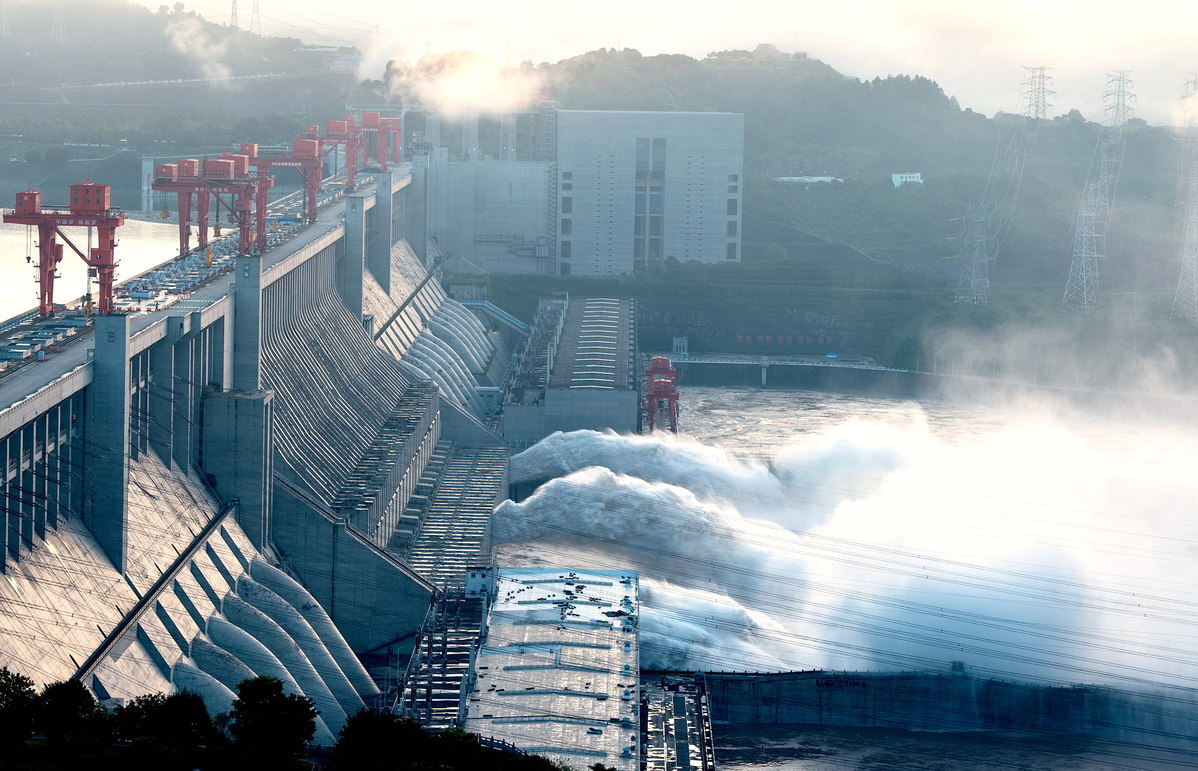Three Gorges Dam has great potential to control floods
By Zhang Boting | China Daily | Updated: 2020-08-12 07:34

Severe rainstorms, heavy downpours and devastating floods have swept across southern China, with the water in several tributaries of the Yangtze River and the Poyang Lake reaching record high levels. The floods along the Yangtze River have prompted some foreign media outlets to claim that the Three Gorges Dam has failed to control floods.
All water conservancy facilities' flood-control capacity is limited. As for the Three Gorges Dam, it's mainly designed to protect the Jingjiang River, a section of Yangtze River in the lower reaches of the dam, and the fertile plains along its banks from frequent floods. As the Jingjiang River's bed is high, it has been vulnerable to floods along its entire length of 360 kilometers.
Yet the Three Gorges Dam has greatly improved flood control in the Jingjiang River. Thanks to the flood regulation of the dam, no part of the Yangtze River's main stream including Jingjiang River has crossed the highest water level mark.
But since it is located between the Yangtze River's midstream and upstream, the Three Gorges Dam plays a relatively small part in flood control in its downstream tributaries. Which explains the recent CNN report that all the severe floods in the lower reaches of the Yangtze River this year occurred in the tributaries.
The Three Gorges Dam can hold the flow of water from the Yangtze River's upstream, preventing it from rushing into the downstream branches. And the dam has fulfilled its role this year, by restricting the water discharge at 19,000 cubic meters per second despite an inflow of 30,000 to 50,000 cubic meters per second in the reservoir.
Although no dike overflows were reported, the high water level in the Yangtze River mainstream still raised some concerns. But that mainly has to do with scientific regulation of the upper, middle and lower reaches of the Yangtze River given the massive flooding this year. In other words, the Three Gorges Dam has acted as an effective defense against floods.
The water level in Three Gorges Dam's reservoir has to be kept below 165 meters in preparation for possible flooding every year, but there is room for another 22.1 billion cubic meters of water during flood season as the water level can be allowed to rise up to 175 meters in the reservoir-the maximum level to keep the dam functioning normally.
And even after the water level reaches 175 meters, there is still room for more inflow because the water level in the reservoir can reach up to 180 meters-but that is in case of emergencies to hold an additional 5 billion cubic meters of floodwater.
We should understand that, like any other water conservancy project around the world, the Three Gorges Dam is meant to reduce flood risks by smoothing the flow of river water in different seasons. And we should not forget that fully taming the flow of any river, the Yangtze River included, is simply beyond the realm of engineering.
Apart from natural factors such as geography, climate and the uneven distribution of precipitation which cannot be controlled, China also lags behind in the construction of reservoirs and dams compared with developed countries. For instance, the pondage factor, ratio of reservoir capacity to river runoff, is a key indicator of a country's modernization. While the ratio is more than 0.9 in most European countries and 0.66 in the US, it is only 0.3 in China. As for the Yangtze River, which has the highest flow of water in China, the pondage factor is even lower-only 0.13.
The US Hoover Dam's storage capacity has doubled the annual runoff, but the Three Gorges Dam can merely handle 5 percent of the total volume. The lack of modern water conservancy projects is a big challenge for China and makes flood control more difficult, compelling the authorities to weigh the option of sacrificing some parts to save the whole during floods.
But China has much room to improve its flood control, and with sustainable economic growth and further modernization, it is capable of fortifying its defenses against floods.
The author is deputy secretary general at China Society for Hydropower Engineering.
The views don't necessarily represent those of China Daily.
























